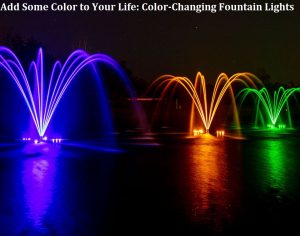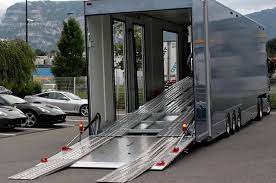
Hey there! Have you ever wondered how the world looks to someone with low vision? Imagine trying to read a book or cross the street when everything appears blurry or dim. It can be a real challenge, but fear not! In this article, we’ll explore the wonderful world of low vision aids that can transform the lives of individuals with visual impairments. These innovative tools and technologies are designed to enhance vision and provide a renewed sense of independence and confidence. So, let’s dive in and discover how low vision aids are making a difference!
What is Low Vision?
Before we delve into low vision aids, let’s understand what low vision actually means. Low vision refers to a visual impairment that cannot be fully corrected with glasses, contact lenses, medication, or surgery. People with low vision may experience a variety of vision problems, such as blurred vision, reduced field of view, or difficulty perceiving colors. It can result from various eye conditions, including macular degeneration, glaucoma, diabetic retinopathy, and cataracts.
The Impact of Low Vision on Daily Life
Living with low vision can present significant challenges. Simple everyday tasks like reading a newspaper, recognizing faces, or navigating through unfamiliar environments can become daunting. Low vision can affect a person’s independence, mobility, and overall quality of life. However, thanks to advancements in technology, there is a wide range of low vision aids available to help individuals overcome these challenges.
Magnifiers: Enlarging Possibilities
One of the most common and effective low vision aids is the reading magnifier. Just like a magic wand, magnifiers can enlarge text, images, and objects, making them easier to see and understand. These aids come in various forms, from handheld magnifiers to electronic magnifying devices. They provide individuals with the ability to read books, newspapers, menus, and labels, and engage in activities they love without straining their eyes.
Assistive Technology: Unleashing the Power of Accessibility
In today’s digital age, technology has opened up new doors for individuals with low vision. Assistive technology tools, such as screen readers, screen magnifiers, and speech recognition software, enable people with low vision to access computers, tablets, and smartphones with ease. These tools convert visual information into audio or large print, allowing individuals to navigate the digital world independently and participate fully in work, education, and social activities.
Wearable Devices: Seeing Beyond the Obstacles
Imagine wearing a pair of high-tech glasses that can enhance your vision and help you navigate through the world with confidence. That’s exactly what wearable devices, like smart glasses, offer to people with low vision. These futuristic gadgets utilize advanced technologies, such as augmented reality and object recognition, to provide real-time visual assistance. They can identify objects, recognize faces, read text, and even provide navigational cues, making everyday tasks more accessible and enjoyable.
Lighting Solutions: Illuminating the Path
Good lighting plays a vital role in optimizing vision for individuals with low vision. Adequate lighting can reduce glare, increase contrast, and improve visual clarity. Lighting solutions specifically designed for people with low vision, such as task lamps and adjustable light sources, can create a well-lit environment tailored to their unique needs. With the right lighting, individuals with low vision can perform tasks with greater ease and confidence.
Electronic Reading Devices: Turning Pages with Ease
For book lovers with low vision, electronic reading devices offer a game-changing solution. These devices, such as e-readers and tablets, allow users to adjust text size, font type, and contrast, catering to their specific visual requirements. Additionally, they often come equipped with text-to-speech functionality, enabling individuals to listen to their favorite books and access a vast library of literature at their fingertips.
Optical Character Recognition (OCR) Technology: Converting Words to Accessibility
OCR technology has revolutionized the way individuals with low vision interact with printed materials. With the help of OCR software and devices, individuals can convert printed text into digital formats that can be read aloud by text-to-speech software or displayed with larger fonts on a screen. This technology enables people with low vision to access important documents, such as letters, bills, and forms, without relying on sighted assistance.
The Future of Low Vision Aids: Promising Innovations
The world of low vision aids is constantly evolving, with researchers and innovators tirelessly working to develop groundbreaking solutions. From retinal implants and bionic eyes to advanced wearable technologies, the future holds incredible potential for individuals with low vision. These innovations aim to restore or enhance vision to levels never before thought possible, providing newfound hope and opportunities for those with visual impairments.
Empowering Lives through Low Vision Aids
Low vision aids are not just tools; they are gateways to independence, confidence, and inclusion. By empowering individuals with low vision to perform daily tasks, pursue education and careers, and actively engage in social interactions, these aids break down barriers and enable people to lead fulfilling lives. They instill a sense of empowerment, allowing individuals to define themselves by their abilities rather than their disabilities.
Vitamins for Low Vision
Our eyes are precious, and proper nutrition plays a vital role in maintaining their health, especially for individuals with low vision. While low vision aids can greatly enhance visual abilities, incorporating essential vitamins like eye vitamins for macular degeneration, into your diet can further support eye health and potentially slow down the progression of certain eye conditions.
Conclusion
In a world that heavily relies on visual information, low vision aids act as beacons of hope, illuminating the path for individuals with visual impairments. From magnifiers and assistive technology to wearable devices and lighting solutions, these aids bridge the gap between limited vision and unlimited possibilities. As technology continues to advance, the future holds even more exciting prospects for individuals with low vision. So let’s celebrate the remarkable achievements made in the field of low vision aids and continue to support and embrace these life-changing innovations. Together, we can create a more inclusive world where everyone can thrive, regardless of their visual abilities.

